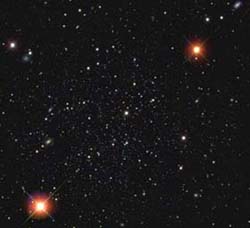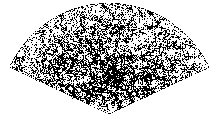What is the Sloan Digital Sky Survey?

The Sloan Digital Sky Survey (SDSS) is an astronomy project working to make a detailed map of the universe. Since 1998, the SDSS's 2.5-meter telescope at Apache Point Observatory in New Mexico has been steadily observing the sky.
The SDSS's map includes more than one-quarter of the entire night sky, including detailed images of nearly 500 million sky objects, and spectra of nearly two million. The complete SDSS dataset, including both these images and spectra and the properties of every star and galaxy it contains.
The SDSS addresses fascinating, fundamental questions about the universe. With the survey, astronomers have learned about the large-scale patterns of galaxies: sheets and voids through the whole universe. Scientists have many ideas about how the universe evolved, and different patterns of large-scale structure point to different theories. Further study of SDSS data will tell us which theories are right - or whether we will have to come up with entirely new ideas.
The original SDSS ran from 1998 to 2005. From 2005 to 2008, an extension called SDSS-II filled in blank spaces on the map, studied stars in our Milky Way, and found hundreds of supernovae, which allow for better understanding of the history of the universe. Since 2008, a new project called SDSS-III has carried on the legacy of the SDSS, exploring the history of the universe, mapping our galaxy near and far, and searching for extrasolar planets. Johns Hopkins University has been deeply involved in all three phases.
Contributions from JHU
Johns Hopkins University has led the development of four major areas of the SDSS:
- The databases that hold the SDSS's catalog data (measurements of sky objects)
- SkyServer, the website that makes SDSS data available to astronomers, teachers, and citizen scientists
- The SDSS Multi-Fiber Spectrograph
- The 20-inch Telescope: used in SDSS-I and SDSS-II to calibrate the survey's photometry

Credits
Funding for the creation and distribution of the SDSS Archive has been provided by the Alfred P. Sloan Foundation, the Participating Institutions, the National Aeronautics and Space Administration, the National Science Foundation, the U.S. Department of Energy, the Japanese Monbukagakusho and the Max Planck Society. The SDSS Web site is http://www.sdss.org/.
The SDSS is managed by the Astrophysical Research Consortium (ARC) for the Participating Institutions. The Participating Institutions are The University of Chicago, the Fermi National Accelerator Laboratory (Fermilab), The Institute for Advanced Study, The Japan Participation Group, The Johns Hopkins University, The Korean Scientist Group, the Los Alamos National Laboratory, The Max-Planck-Institute for Astronomy (MPIA), The Max-Planck-Institute for Astrophysics (MPA), the New Mexico State University, The University of Pittsburgh, Princeton University, The United States Naval Observatory, and The University of Washington. Apache Point Observatory, site of the SDSS telescopes, is operated by the Astrophysical Research Consortium (ARC).
The Microsoft Bay Area Research Center helped develop the SkyServer and its interface, and Microsoft Research has contributed computing hardware and software for the SkyServer.



